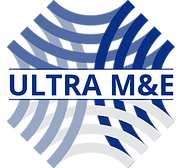Electrical Safety Policy
1. General Statement
It is our policy to ensure that all fixed electrical installations and portable electrical equipment meet established standards, are maintained in a safe condition, and are worked on in a safe manner, so far as is reasonably practicable.
2. The Legal Position
The Electricity at Work Regulations 1989 (EAWR) set out the standards which apply to the use of electricity in the workplace. Within EAWR an electrical system is defined as including the source, equipment, and all the means of connection in-between. Therefore, where the EAWR refer to the maintenance of “systems” these include portable appliances.
The EAWR provide that systems must be: suitably constructed and maintained in a safe condition; protected against adverse conditions and physical damage; suitably earthed and fitted with other protection against shock and overcurrent; and equipped with a means of disconnecting and isolating the supply. They also contain provisions relating to safe working with electrical systems including restrictions on live working and requirements relating to competency and training.
Technical standards for installations and recommended inspection and maintenance programmes are described within BS 7671 2008 “Requirements for Electrical Installations in Buildings”, otherwise known as the IEE Wiring Regulations 18th Edition. Compliance with the standard can be used to demonstrate compliance with the EAWR.
The Management of Health and Safety at Work Regulations 1999 require that risk assessments are undertaken in order to evaluate risks and identify the necessary preventive and precautionary measures to avoid accidents and incidents.
3. Management Responsibilities
Our Managing Director, Charlie Almond, is responsible for ensuring that:
-
work on the fixed electrical systems and, so far as it is within their control, portable appliances, is only undertaken by competent authorised persons, i.e. [in-house electricians and competent contractors.
-
there is a programme of periodic inspection and testing of fixed electrical installations and portable appliances in accordance with this policy
-
any suspected faults are investigated promptly and resolved
-
no storage is permitted where it would obstruct access to distribution boards and isolation points
-
no live working is undertaken other than testing which cannot be carried out with the system dead. Where such testing takes place, shielded test probes must be use
-
a permit-to-work is issued where the point of isolation is remote from the place where the work is being undertaken.
Any manager responsible for overseeing construction and maintenance work, whether carried out by staff or contractors, must check that the equipment meets the suitability criteria in Section 5. They must also ensure that services diagrams are shared and that safe systems of work are employed by those at risk of striking hidden services buried in walls, floors or external surfaces. Furthermore, any exterior overhead lines must be highlighted to the supervisor of the work, and taken into account within working arrangements, if there is any possibility that equipment may strike them.
All managers are responsible for ensuring that electrical equipment used by their teams is suitable for its purpose, is registered on the asset register held by Charlie Almond that it is withdrawn from use if damaged, made available for electrical testing when requested and only repaired by competent authorised persons.
Managers must ensure that risk assessments are undertaken for the work carried out by their staff, and that those assessments take into account any electrical hazards. Where staff complete electrical work as part of their job, this must be undertaken in accordance with a written safe system of work specific to the task at hand.
4. Employee Responsibilites
No employee may work on electrical equipment or carry out repairs unless they are qualified for the type of work and have been specifically authorised to do so.
All employees must check the lead of any portable item before it is plugged in and be alert to any equipment which may have become damaged. Damaged equipment must be taken out of use immediately, labelled to indicate that it must not be used, locked away out of use if possible and reported to Charlie Almond.
5. Suitability of Equiptment
Portable electrical equipment used externally must be either battery powered, pneumatic or 110 volt or less, i.e. used with a transformer. Extension leads must be located after any transformer to avoid long lengths of cable operating at 240 volts.
Exception: in dry conditions, when it is not practicable to follow the above policy, 240 volt equipment may be used, provided that a residual current device is fitted to the circuit or at the socket.
Internal construction and maintenance work should also be carried out using reduced voltage, battery or pneumatic equipment where reasonably practicable, and otherwise may be undertaken with 240 volt tools, subject to there being only dry non-conductive conditions and provided that RCD protection is fitted to the circuit or at the socket.
Electrical equipment which is installed out of doors will have an appropriate rating against dust and water ingress (IP rating).
6. Inspection & Testing
It is Company policy that a certificate will be obtained confirming that any new installation work and alterations comply with BS 7671.
Installations will be subject to an annual visual inspection as well as a periodic inspection and test every five years Recommendations for improvement arising from such inspections will be implemented as necessary for safety.
Visual inspection and testing of portable appliances will be undertaken in accordance with a schedule which takes into account the risk of damage to equipment when it is in use. In devising a schedule, regard will be had to HSE guidance on the topic http://www.hse.gov.uk/pubns/books/hsg107.htm. Equipment will be labelled to show that it has been inspected and showing when the next one is due.
